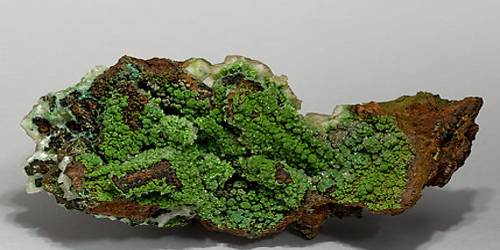A team from the University of Illinois has redesigned the popular crop growth simulation software BioCro, making it a more user-friendly and efficient way to predict crop yield. The updated version, BioCro II, makes it much easier for modelers to use the technology and includes faster and more accurate algorithms.
“In the original BioCro, all of the math that the modelers were using was mixed into the programming language, which many people weren’t familiar with, so it was easy to make mistakes,” said Justin McGrath, a Research Plant Physiologist for the United States Department of Agriculture, Agricultural Research Service (USDA-ARS) at Illinois. “BioCro II separates those so modelers can focus on the equations rather than the programming.”
By separating the equations from the programming language, researchers can experiment with new simulations more easily. For example, if a project is investigating how a gene can help plants use light more efficiently, the equations for that specific gene can be added to existing models rather than changing the entire model to incorporate the new information. This advancement also allows the software to work well with other models, which is a significant improvement over the original BioCro.
In the original BioCro, all of the math that the modelers were using was mixed into the programming language, which many people weren’t familiar with, so it was easy to make mistakes. BioCro II separates those so modelers can focus on the equations rather than the programming.
Justin McGrath
McGrath and his colleagues discuss all of the improvements they made to the original BioCro software, as well as why they were necessary to improve modeling capabilities for researchers, in a recent study published in in silico Plants.
This approach adds significant value to existing analytical and empirical research methods and has a wide range of potential applications, ranging from genotype-to-phenotype modeling and breeding to agronomy and cropping system design. Because environmental influences on each individual component of the plant can be simulated, interesting applications in ornamental production (flower quality), pests and diseases (e.g., insect movement), and the plant’s acquisition of resources (light, nutrients, and water in soil) will become possible.

“If you have a gene and are wondering how much it can improve yield, you have a tiny piece in the context of the entire plant. Modeling allows you to take that one change, implement it in the plant, and compare yield with and without the change “said Edward Lochocki, lead author of the paper and RIPE postdoctoral researcher. “With the updates we’ve made to BioCro II, if you have ten gene changes to make, you can look at all of them quickly and gauge relative importance before moving the work into the field.”
This work is part of Realizing Increased Photosynthetic Efficiency (RIPE), an international research project that aims to increase global food production by developing food crops that turn the sun’s energy into food more efficiently with support from the Bill & Melinda Gates Foundation, Foundation for Food & Agriculture Research, and U.K. Foreign, Commonwealth & Development Office.
“BioCro II represents a complete redesign of the original BioCro, eliminating significant duplication of code, improving code efficiency, and eliminating hard-wired parameters,” said RIPE Director Stephen Long, Ikenberry Endowed University Chair of Crop Sciences and Plant Biology at the Carl R. Woese Institute for Genomic Biology at the University of Illinois. “All of these changes make it much easier to use the model for new species and cultivars, as well as to link it to other models, as demonstrated recently by adapting BioCro II for soybean.”
With the most recent updates, crop modeling with BioCro II will enable researchers to quickly test ideas and deliver results to farmers.
















